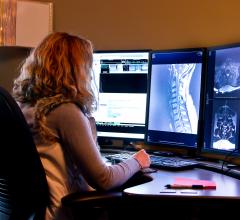If you enjoy this content, please share it with a colleague
Ascendian Healthcare Consulting
RELATED CONTENT
- Chapters
- descriptions off, selected
- captions settings, opens captions settings dialog
- captions off, selected
- en (Main), selected
This is a modal window.
Beginning of dialog window. Escape will cancel and close the window.
End of dialog window.
This is a modal window. This modal can be closed by pressing the Escape key or activating the close button.
In the midst of increased mergers and industry acquisitions, healthcare leadership is becoming more cognizant of the need to have enterprise imaging strategies in place that answer a long-standing question in medical imaging: “How will we get our providers the images and data they need when and where they need it most?”
As the enterprise imaging market matures, the technology used to access and view images is rapidly changing.
How we store, access, and manage imaging information has never been more important, and complex, than it is now.
Logicalis Healthcare Solutions and strategic partner Ascendian Healthcare announced the initiation of a campaign to help healthcare organizations develop an effective enterprise imaging strategy. Efforts include a new eBook co-authored by the two companies and participation in a joint eHealth Radio Network Interview.
Healthcare has been “taken to school” and is now rethinking health information technology (HIT) investments with a ...
Ascendian Healthcare Consulting, a national healthcare IT consultancy, has partnered with Yuma Regional Medical Center ...
Logicalis Healthcare Solutions, the healthcare-focused arm of Logicalis US, announced formation of a strategic partnership with Ascendian Healthcare Consulting, specializing in medical imaging. Together, the two companies will combine their talents and resources to help healthcare information technology (IT) professionals tackle medical imaging obstacles.
Technology expertise within the IT department is not a sufficient skillset to ensure successful implementation of an Enterprise Imaging Platform. IT not only needs to understand the underlying technology of the vendor product, but how that technology will integrate with every other technology within the organization. Add to this the need to understand the impact on clinical, operational, and technical workflows, tight timelines, and no tolerance for budget overruns and you have a very complex environment to manage.
Perhaps the biggest trend in health information technology today is the movement away from traditional picture archiving and communications systems (PACS) and cardiovascular information systems (CVIS) to enterprise imaging and data management systems. This migration is important, because it will fundamentally change how clinicians have been accessing images and patient information for the past 20 years.

 March 11, 2016
March 11, 2016 







